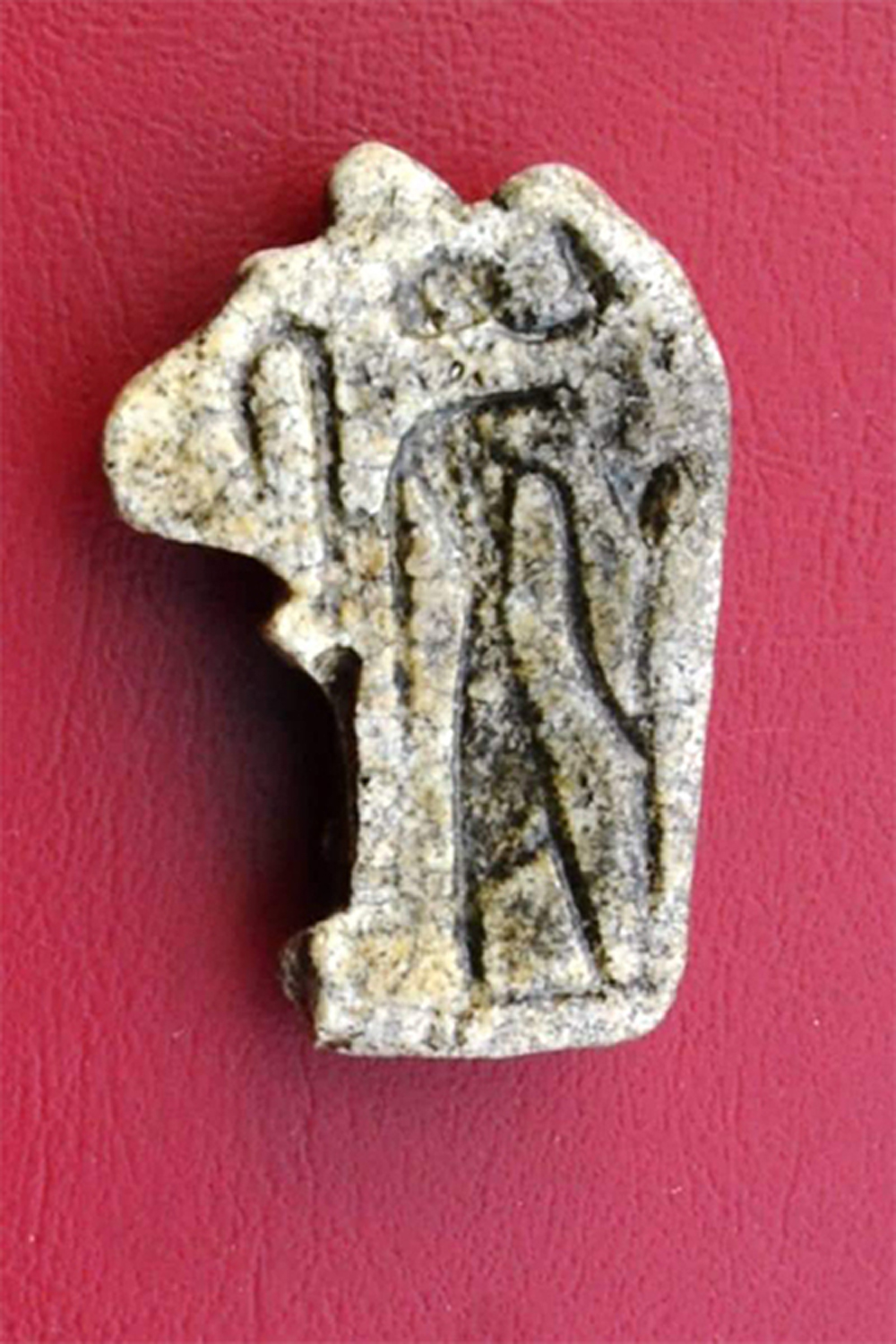
In the stays in the form of hives, there have been, among other things, mud ovens. Experts believe this is an important finding, as cereals were burned, insects were cleaned, moistened and food was kept in good condition.
In addition to the furnaces, other objects have also been found, such as the one in the photo on the left, and other similar amulets. I mean, the ancient Egyptians had amulets for Horus's eye to also protect food.
Luxorren, Erregeen Haranetik gertu, hilobi garrantzitsu baten sarrera eta pasabide nagusia aurkitu zituzten 2022an. Orain, alabastrozko objektu batean Tutmosis II.aren kartutxoa topatu dute (irudian). Horrek esan nahi du hilobi hori XVIII. dinastiako faraoiarena... [+]
Mostafa Waziri, Secretary General of the Upper Ancient Council of Egypt, recently presented the gigantic restoration project of the Mizerino pyramid: They will cover the man's smallest pyramid with granite blocks to regain its original appearance. Although Waziri has... [+]
Researchers at the Conservation Centre of the Egyptian Museum of Cairo have found that Eutrema japonicum or Cochlearia wasabi radish is suitable and effective for the cleaning and conservation of papyrus. That is, the wasabi used mainly in the Japanese kitchen, for its... [+]
Nilometroak Nilo ibaiaren ibilgu naturaletik hurbil eraikitzen zituzten era askotako eskalak ziren: eraikin konplexuak ziren batzuk, beste batzuk putzu soilak edo harrian zulatutako eskailerak. Antzinako Egipton, basamortua zeharkatzen duen Nilo ibaia funtsezkoa zen nekazaritzan... [+]
Hiru kontzeptuok aztertu eta antzinako egiptoarren sinesmenekin lotu ditu Brown unibertsitateko (AEB) Victoria Almansa Villatoro egiptologoak (Journal of Egyptian Archaeology).
Egipto, K.a 2162 edo 2191. Nitokris faraoiaren bi urteko erregealdia amaitu zen eta, hala, VI. dinastia amaitu eta Egiptoko lehen tarteko aroa hasi zen.
Nesiamon duela 3.000 urte inguru Karnakeko Amonen tenpluan jardun zuen apaiz egiptoarra izan zen eta haren momia Leedseko (Ingalaterra) museoan egon da 1823az geroztik.